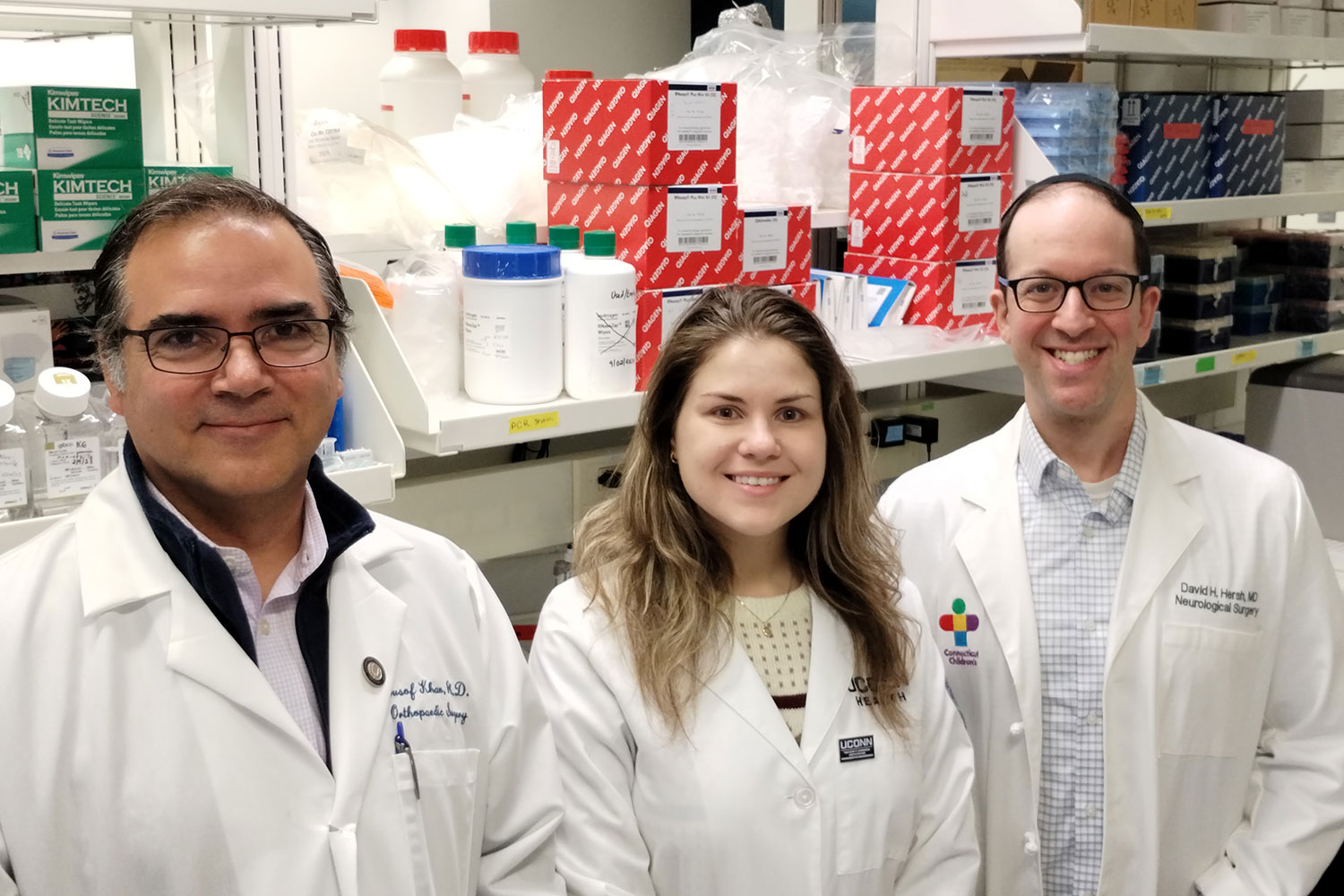 Marcian Hoff invented the world’s first microprocessor; John Bardeen co-invented the transistor; Seymour Cray, the father of supercomputing, co-founded Cray Research; Stephen Wozniak co-founded Apple Computer; Karlheinz Brandenberg co-developed the MP3 compression scheme. The role of engineers in fostering innovation and business startups is legendary. But starting a new business is among the riskiest paths any innovator can undertake. What does it take to transform engineers from innovators into successful entrepreneurs?
Marcian Hoff invented the world’s first microprocessor; John Bardeen co-invented the transistor; Seymour Cray, the father of supercomputing, co-founded Cray Research; Stephen Wozniak co-founded Apple Computer; Karlheinz Brandenberg co-developed the MP3 compression scheme. The role of engineers in fostering innovation and business startups is legendary. But starting a new business is among the riskiest paths any innovator can undertake. What does it take to transform engineers from innovators into successful entrepreneurs?
This fall, the schools of Engineering and Business embarked on a new venture geared to add business tools to the undergraduate engineering tool belt. Ten engineering seniors and 15 juniors opted to augment their coursework with rigorous MBA-level entrepreneurship classes offered through the School of Business, and to apply their blossoming business knowhow within the framework of their culminating senior design projects.
According to associate professor Richard Dino, Executive Director of the Connecticut Center for Entrepreneurship & Innovation at UConn, by exposing the engineering students to core business principles and nurturing their awareness of the entrepreneurial approach to capturing opportunities, the students will enjoy a perceptible advantage with prospective employers. On the flip side, through their exposure to engineers, the future MBAs will better understand and appreciate the more analytical framework engineers employ in conceiving new ideas, solving technical challenges and improving upon existing products. The marriage of the two disciplines – engineering and business – on project teams requires the students to cast aside preconceptions, quickly forge a common “language” and apply the canons of engineering and business toward successful technological commercialization. The results of this hybrid collaboration should be more holistic and far exceed the independent performance of either group, according to Dr. Dino.
The two MBA-level courses, both taught by Dr. Dino, are Management 5634: Opportunity Generation, Assessment & Promotion and Management 5335: Venture Planning, Management & Growth. The first involves several modules that lead students through key facets of the entrepreneurial process and help them create, innovate, identify, evaluate and shape new business opportunities. Experiential learning, a hallmark of the Business School curriculum, is the critical vehicle, and the students approach almost all of the challenging and time sensitive assignments from a collaborative team perspective. A complex business simulation conducted in the context of a very competitive high technology marketplace, and the development of a business plan undergirded by the engineering senior design technology, drive the second course.
Dr. Dino introduces a hypothetical large, monopolistic high-tech electronic sensor company that was broken up by the U.S. government into five smaller, more competitive firms. Each team “owns” one of companies and must manage and grow the business by developing decisions that balance the complex interplay among research and development, manufacturing, marketing, finance and other highly integrated facets of the enterprise. In a second module, business plans are formulated to help drive the potential commercialization of products built on the intellectual property and prototypes from the engineering students’ senior design projects.
In both classes, Dr. Dino introduces and reinforces the concept of lateral thinking as fundamental to innovation and successful outcomes. His courses are designed to mirror the often intense business environment in which employees may be called upon to present and defend a plan with little, and sometimes no, advance notice. Cornerstones of his entrepreneurship classes, which are syllabus-free, are a high level of rigor and the certainty that students will be pushed beyond their comfort zones. Engineering students must quickly assimilate the business fundamentals and also master the fine art of moving decision-makers to action, where presentations are delivered sans the usual crutches, including PowerPoint slides, index cards and laptops.
Jonathan Riscica, a Biomedical Engineering senior, opted to participate in the program after completing a summer internship in lean manufacturing that excited him. “It’s been a great experience so far. The business side of things is much broader in perspective, and less concrete,” he said, than the more methodical, structured engineering approach. Mr. Riscica said he was surprised by the freewheeling, fast-paced atmosphere of the Opportunity Generation class. In one assignment, the team was given one week to conceive a business and generate actual funds to be donated to charity. His team hatched several schemes to generate value – donated coffee and donuts were sold in the Student Union, patriotic ribbons were sold at a football game, and lunch with UConn President Hogan was auctioned to the highest bidder – that yielded real cash donated to charity.
John Bennett, Associate Dean for Academic Affairs, oversees the engineering side of the evolving program. During this first year, entrepreneurship senior design project (ESDP) seniors are balancing the two management courses simultaneously during the fall semester, along with their regular engineering courses; participating juniors will complete the two courses over their junior and senior years. Dr. Bennett said that in contrast with their peers, the ESDP students will not only take the two MBA courses but also apply their knowhow to their senior design projects, starting with “a blank slate, taking the design in whatever direction works best in conjunction with the accompanying market/business analysis.”
Senior Mechanical Engineering student Carlton Forse said that after a summer internship at Alstom Power, during which he observed that most engineers were performing in business-oriented tasks, he “had an epiphany that I wanted to do more than crunch numbers all day.” Mr. Forse is enthusiastic about the MBA coursework and the team collaborations. He observed that the MBA students are more apt to arrive at decisions quickly, while engineers are trained to develop decisions more methodically after careful analysis; the two contingents are learning and adapting their approaches based on these interactions. He and his teammates have already begun initial steps on their UConn Health Center-sponsored senior design project, which involves design and development of a multi-terrain wheelchair operated only mechanically.
Allison Ray and Philip McDonald, two second-year MBA candidates, said they were initially surprised to learn undergraduate engineering students had been streamed into their entrepreneurship course. Mr. McDonald observed that many MBA students are a decade older than their engineering teammates and separated by dissimilar academic training and a different academic culture. The differences, however, quickly dissolved as the teams have learned to meld their skills complementarily. Ms. Ray and Mr. McDonald agreed that they are learning to approach business problems from a more technical perspective as a result of their interactions with engineering teammates, while the engineering students are gaining insight into business fundamentals such as nuances of balance sheets, profit and loss calculations, the PPPD concept, and marketing models. Both said they find the experience refreshing.
Dr. Bennett said that although the timetable this year is compressed, in future years, the entrepreneurship teams will form organically during the participants’ junior year in response to the needs and interests of the product/process, potential market and parties involved. He said the project scope and framework will emerge and gain definition throughout this period, laying the groundwork for the team’s clearly articulated set of tasks, which are carried out during the senior year.
Junior Chemical Engineering/EUROTECH student Allison Melch, who is taking only the Opportunity Generation course this year, said it is perhaps her most challenging course because it is a radical departure from the normal engineering coursework and requires on-the-spot discussions and concept selling and a different perspective. “As a result of this program,” she said, “I am increasing the confidence with which I pursue the corporate world. I am realizing the benefits of working from an integrated frame of mind — that is to say, a frame of mind that combines the innovations of engineering and the practicality associated with successful business. I’ve also realized just how critical it is to be business-savvy.”



